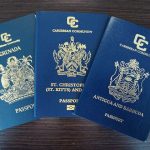Planning your dream Tanzania adventure can feel overwhelming when you’re faced with numerous flight options, safari packages, and packing lists. You’re not alone in feeling lost about where to start or how to avoid expensive mistakes that could derail your African journey. This comprehensive Tanzania travel guide breaks down everything from securing the best flights to Tanzania to crafting the perfect Tanzania itinerary.
Whether you’re dreaming of witnessing the Great Migration or scaling Mount Kilimanjaro, we’ll show you exactly how to make your Tanzanian journey seamless and unforgettable.
Smart Flight Booking Strategies for Tanzania
Now that you understand the incredible experiences awaiting you in Tanzania, let’s tackle the first crucial step, securing the best possible flights to get you there affordably and efficiently.
Finding affordable flights to Tanzania doesn’t have to drain your savings if you know the right strategies. Many travelers opt to work with experienced operators. Sababu Safaris can offer valuable insights on optimal arrival times and airport selections that suit your planned itinerary.
Best Airlines and Routes to Dar es Salaam and Kilimanjaro
Most international travelers arrive through Julius Nyerere International Airport in Dar es Salaam or Kilimanjaro International Airport. Emirates, KLM, and Turkish Airlines offer reliable connections with competitive pricing. Qatar Airways also provides excellent service with convenient layovers in Doha.
Direct flights from Europe typically run $800-1,200, while US travelers can expect $1,000-1,800 depending on the season. Consider flying into Kilimanjaro if you’re heading straight to northern parks; it’ll save you hours of ground transport.
Seasonal Pricing Patterns and Money-Saving Tips
Flight prices peak during July through October when the Great Migration draws massive crowds. Book at least three months ahead for these months, or consider May and November for significant savings, sometimes up to 40% less.
Tuesday and Wednesday departures often cost $100-300 less than weekend flights. Use flexible date searches and set price alerts through Google Flights or Sky scanner to catch sudden drops.
Essential Pre-Travel Preparations
With your flights booked and travel dates locked in, it’s time to ensure you’re properly prepared for Tanzania’s unique health requirements and entry procedures before you depart. Approximately 70 percent of the global Muslim population is aged below 40, which means Tanzania increasingly caters to younger, culturally diverse travelers seeking authentic experiences.
Vaccination Requirements and Health Precautions
Yellow fever vaccination is mandatory if you’re arriving from endemic countries, but recommended regardless. Most doctors also suggest hepatitis A, hepatitis B, and typhoid shots. Start this process 4–6 weeks before departure, since some vaccines require multiple doses.
Malaria prevention is crucial; consult your doctor about antimalarial medications. Pack insect repellent with at least 20% DEET, and consider permethrin-treated clothing for extra protection.
Travel Insurance Options and Currency Exchange
Comprehensive travel insurance covering medical evacuation is non-negotiable. Companies like World Nomads or Allianz offer Africa-specific policies starting around $100-200 for two weeks. Tanzania uses the Tanzanian Shilling, but US dollars are widely accepted at hotels and tour operators.
Perfect Tanzania Itinerary Options by Duration
Armed with your vaccinations, insurance, and travel documents sorted, you’re ready to dive into the exciting part, crafting a Tanzania itinerary that maximizes your Tanzanian adventure based on your available time.
7-Day Northern Circuit Safari Experience
This classic Tanzania itinerary covers Tarangire, Serengeti, and Ngorongoro Crater. You’ll spend two days in Serengeti during peak season, one day each in Tarangire and Ngorongoro, with travel and rest days between. Budget $2,500-4,000 per person for mid-range accommodations.
10-Day Wildlife and Cultural Immersion
Add Lake Manyara and a cultural visit to Maasai villages. This extended itinerary allows more relaxed game drives and authentic cultural exchanges. Include a rest day in Arusha for shopping and local dining experiences.
14-Day Ultimate Tanzania Adventure with Zanzibar
Combine the northern safari circuit with 4–5 days on Zanzibar’s pristine beaches. Stone Town’s spice markets and historic architecture provide a perfect contrast to bush adventures. Budget an extra $150-200 daily for Zanzibar accommodations and activities.
Transportation Solutions Within Tanzania
Once you’ve mapped out your dream itinerary, the next critical piece is understanding exactly how you’ll move between Tanzania’s incredible destinations efficiently and safely.
Domestic Flight Networks and Safari Vehicle Options
Regional carriers like Coastal Aviation and Safari Air Link connect major parks with reliable service. A flight from Arusha to Serengeti costs $200-350 per person, but saves 6–8 hours of driving. Bush planes land on dirt airstrips, pack light, and expect weight restrictions.
Safari vehicles range from basic Land Cruisers to luxury 4WDs with pop-up roofs and charging ports. Group tours typically use 6-8 seat vehicles, while private safaris offer more flexibility and comfort.
Accommodation Strategies for Every Budget
With your transportation logistics planned, choosing the right accommodations becomes essential for both your comfort and budget throughout your Tanzanian journey. Research shows that the sample was slightly dominated by male employees (53.6%), with females constituting 43.6% in East African hospitality, highlighting the diverse workforce you’ll encounter during your stay.
Luxury Safari Lodges and Tented Camps
Premium lodges like Serengeti Safari Camp or Ngorongoro Crater Lodge offer world-class amenities with rates from $800-1,500 per person nightly. These include gourmet meals, guided walks, and spectacular locations overlooking migration routes or crater rims.
Mid-Range Options and Budget-Friendly Choices
Mid-range tented camps provide excellent value at $300-600 per person daily, including meals and game drives. Budget camping safaris start around $150-250 daily but require shared facilities and basic meals. Public campsites offer rock-bottom pricing for self-sufficient travelers.
Travel Essentials for Tanzania Checklist
Now that you know where you’ll be staying, it’s time to pack smart with the specific travel essentials for Tanzania that the country’s diverse climates and activities demand.
Climate-Appropriate Clothing and Photography Equipment
Pack lightweight, neutral-colored clothing for game drives. Long sleeves protect against insects while remaining cool. A good camera with a telephoto lens captures distant wildlife; consider 200-400mm for excellent shots without disturbing animals.
Sturdy hiking boots are essential for walking safaris or Kilimanjaro attempts. Bring both sandals and closed shoes since many lodges require foot coverage during evening hours.
Health and Safety Items Plus Technology Essentials
Pack a comprehensive first-aid kit including anti-diarrheal medication, pain relievers, and bandages. Portable phone chargers and power banks keep devices running during long game drives. Consider a satellite communicator for remote areas.
Money-Saving Secrets and Local Insights
Beyond packing the right items, savvy travelers know that timing and local knowledge can dramatically reduce their Tanzania travel costs without sacrificing the experience.
Shoulder Season Advantages and Group Booking Benefits
Visit during May-June or November for 30-50% savings on accommodations and tours. Wildlife viewing remains excellent, with fewer crowds at popular spots. The short rains in November enhance photography with lush green landscapes.
Book group tours with friends, or join existing groups to split vehicle costs. Many operators offer significant discounts for 4+ people sharing safari vehicles and accommodations.
Digital Tools and Apps for Smooth Travel
While local insights save you money, the right digital tools can transform your Tanzania experience by keeping you connected, informed, and navigating like a pro even in remote areas.
Offline Maps and Essential Communication Apps
Download offline maps through Maps. Me or Google Maps before departure. Cell coverage can be spotty in remote parks. WhatsApp works well for communicating with guides and operators throughout Tanzania.
Consider purchasing local SIM cards from Vodacom or Airtel for affordable data and calling. Most lodges offer Wi-Fi, though speeds vary significantly between locations.
Sustainable and Responsible Travel Practices
Technology enhances your journey, but traveling responsibly ensures Tanzania’s natural wonders and local communities thrive for future generations to enjoy.
Community-Based Tourism and Wildlife Conservation
Choose operators supporting local communities through employment and revenue sharing. Many visiting Tanzania tips emphasize supporting village-run cultural programs that provide authentic experiences while benefiting residents directly.
Practice responsible wildlife viewing by maintaining proper distances and following guide instructions. Your tourism dollars directly fund conservation efforts protecting endangered species and their habitats.
Emergency Preparedness and Safety Protocols
Responsible travel includes being prepared for unexpected situations. Here’s how to stay safe and handle emergencies during your Tanzanian adventure.
Medical Emergency Procedures and Embassy Contacts
Register with your embassy upon arrival and keep emergency contact numbers readily available. Most safari operators carry satellite phones for remote area emergencies. Travel insurance with evacuation coverage is absolutely critical.
Store digital copies of important documents in cloud storage. Carry physical copies separately from originals. Inform family of your itinerary and check in regularly during your travels.
Common Questions About Tanzania Travel
With safety protocols in place, let’s address the most common questions travelers have about visiting Tanzania to clear up any remaining uncertainties.
Q: Which months offer the best wildlife viewing in Tanzania?
June through October provides excellent game viewing, with dry conditions concentrating animals around water sources and facilitating easier park access.
Q: Is tap water safe to drink in Tanzania?
No, stick to bottled or filtered water throughout your trip. Most lodges provide safe drinking water, but always confirm with staff first.
Q: What’s the difference between camping and lodge safari experiences?
Camping offers authentic wilderness immersion at lower costs but with basic facilities. Lodges provide luxury amenities and gourmet meals at premium prices.







